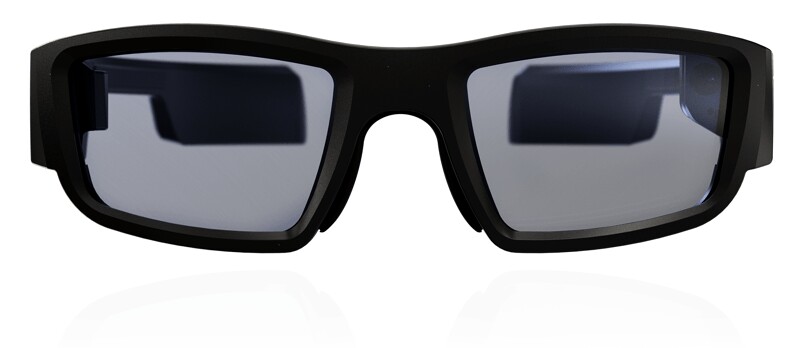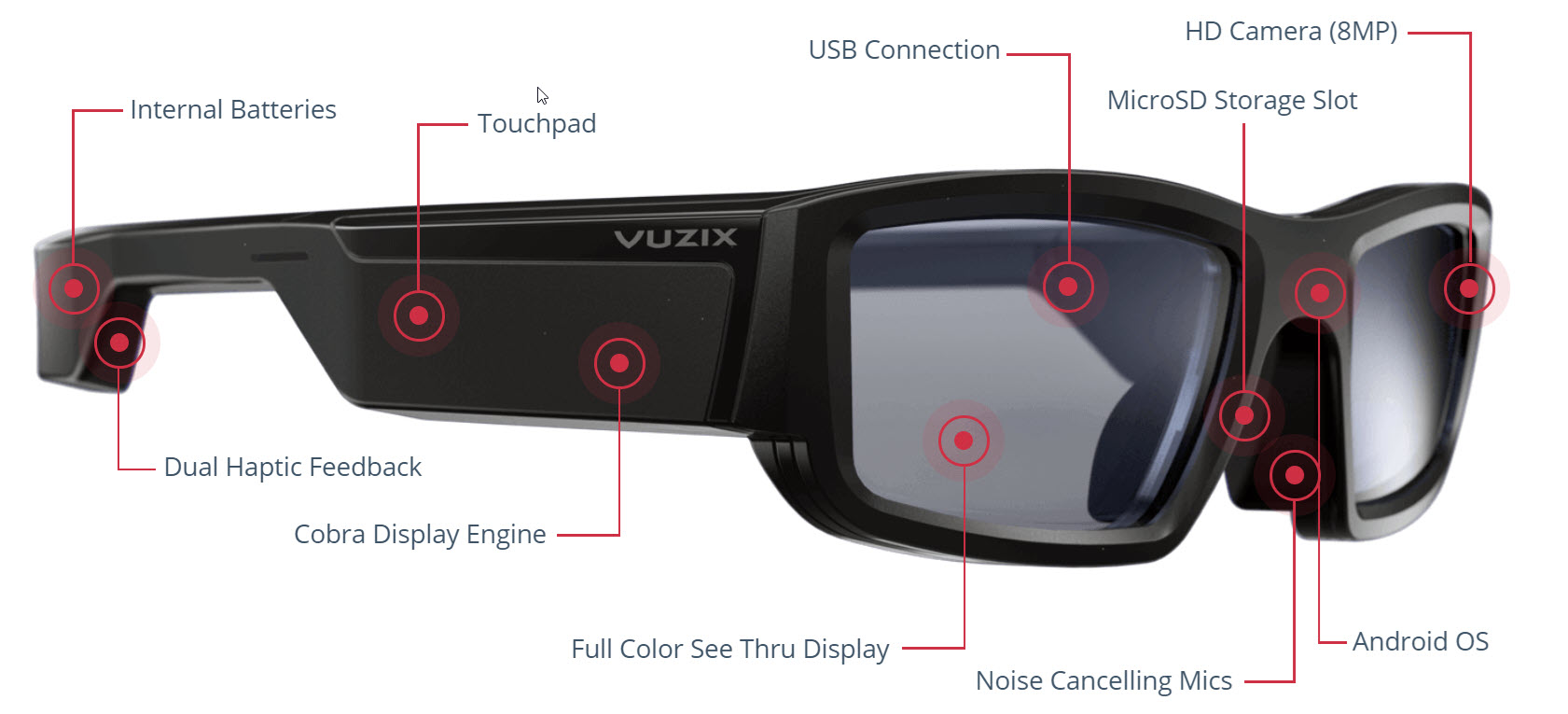Boarding VAR is from France and was part of the French contingent in the Eureka Park. The company believes it has a solution to the problems caused by VR upsetting people by causing motion sickness. The device puts tiny LED lights in the very peripheral parts of the user’s vision which are driven by an inertial system that is in the headset. This gives the user’s brain a frame of reference for motion that is based on the physical reality and eliminates the motion sickness, it claims. We were at the booth just as the show was closing, so we didn’t have a chance to try it, but it’s an interesting idea.
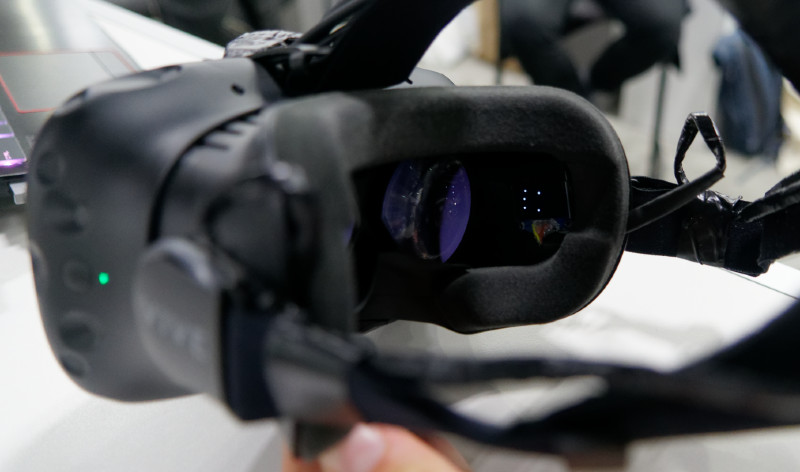 BoardingVAR uses small points of light to give users of VR an ‘artificial horizon’. Image:Meko
BoardingVAR uses small points of light to give users of VR an ‘artificial horizon’. Image:Meko
Borderless was one of a number of companies showing motorcycle helmets with displays at CES 2018. The CrossHelmet works with a smartphone and is said to give a 360º view of the rider and surrounding with GPS and weather information in a display that is described as ‘like a rear view mirror’. The helmet is being developed as a kickstarter project and had raised $345K against a $100K target. There’s a promotional video here. There are no details of the display device at this stage.
The Borderless CrossHelmet gives a 360 degree view using AR.
Daqri was at the show with its smart glasses that it launched at last year’s CES. Daqri and Flex said last summer that they would work together and that Flex would make the Daqri glasses. One of the items of news at this year’s show was that Flex has developed a system that was being shown in the Venetian. (Flex Develops AR Headset Using ‘Sketch to Scale’ Concept) Following that, Daqri started shipping its Smart Glasses, made by Flex, in November. Daqri is also working with Dell on AR solutions based on the glasses.
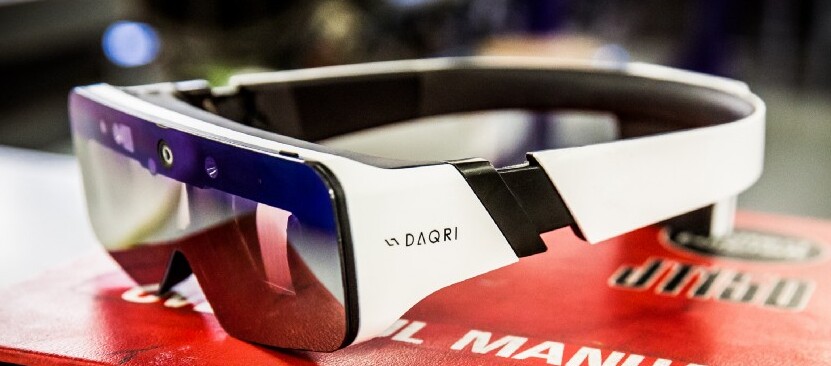 Daqri’s Smart Glasses are being made by Flex and sold by Dell
Daqri’s Smart Glasses are being made by Flex and sold by Dell
Huawei was on the show floor and we reported on its phones (Smartphone Round Up – CES 2018), but after the show, we found it had shown the new VR2 headset. It has 1600 x 1440 resolution in each eye, at 90Hz, and needs to be driven from a phone (like the Mate 10 Pro), tablet or PC via USB Type-C. The unit is compatible with content from Steam and also works with Google Daydream content and is endorsed by IMax. We’ll try to get a more detailed look at MWC next month. The company also had a 360º camera attachment, known as the EnVizion.
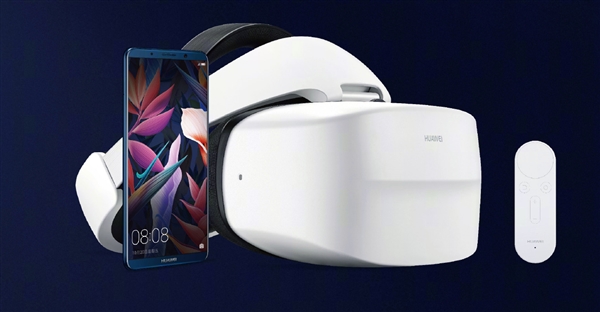
Innolux had a suite, although we never managed to find out where it was while the show was on. In the suite the company was showing a range of products for automotive use. The company highlighted a 10.1″ LCD that uses ‘thousands’ of miniLEDs in the backlight to create a high contrast image.
There was an 8″ “Go Black” panel that matched the colour of the cover glass and bezel so that the panel was not clearly differentiated visually. There was a 10.1″ display that has gesture control so that a driver could use a gesture to control functions such as audio volume and heating temperature. There was a 12.6″ display with integrated mechanical roller controls, usually used for volume, temperature, and air direction and that makes life simpler for the auto maker by reducing the number of suppliers.
In bigger displays, there was a 50″ ‘double S’-shaped curved display with 50″ diagonal and that could be used to replace the dashboard, CID, rearview mirror with a single display. The smallest curve is R600 mm and it had local dimming to deliver high contrast. There was also an automotive HUD. The company quoted forecasts from IHS that the market for factory-supplied automotive HUDs would grow from 1.2 million in 2012 to 9.1 million in 2020. The HUD had fullHD resolution and had a field of view of 12º.
Innolux also showed a rear lamp based on LED that shows a warning triangle if the driver behind is too close.
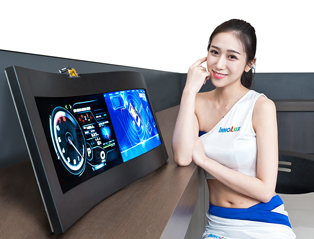 Innolux previously showed its miniLED display at Touch Taiwan
Innolux previously showed its miniLED display at Touch Taiwan
iQiyi is from China and was showing the Qiyu VR II at the show. Ot is claimed to support true 7680 x 4320 playback (although it’s not clear from the company’s press release what the actual display resolution is, although it did describe the display as an ‘all-new upgraded 4K LCD fast-response screen’). It has an integrated 3DOF tracker and can be upgraded to 6DOF using a controller.
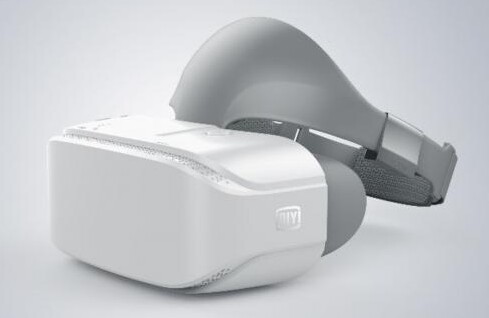 The Qiyu VR II is said to have a 4K LCD
The Qiyu VR II is said to have a 4K LCD
Unfortunately, we didn’t get to catch up with Kopin at CES, but the company said that it was showing a new 1280 x 720 OLED microdisplay, the Lightning, which has a 0.49″ diagonal and brightness of over 1,000 cd/m², which Kopin believes is good enough for some AR applications and is a good result for a design that uses colour filters. The company expects it to be used in entertainment devices and said that its partner, Pico Interactive, has already designed it into the ‘Eagle’ Mobile Theater, a CES 2018 Innovation Awards Honoree. Kopin has taken a stake in a new subsidiary of Pico, Qingdao Yueshi Technology Co. Ltd.
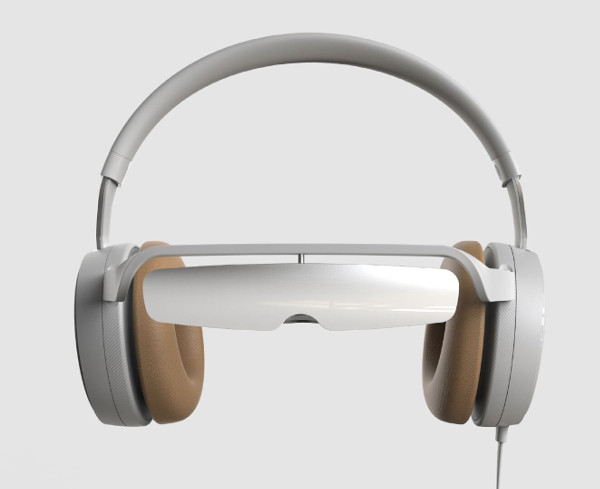 The Eagle headset from Pico uses a Kopin microdisplay.
The Eagle headset from Pico uses a Kopin microdisplay.
The chip uses less than 40mW when running at 60Hz. It will go into mass production through the firm’s deal with Olightek.
As well as the new microdisplay, the company was showing its Elf VR Reference design that uses the firm’s microdisplays (which have 2,940 ppi) and its Solos glasses (IC03 Kopin Has a Real Business in AR/VR)
Lumus has been a company that we have been tracking for a long time – since 2011. The company’s technology was on show at CES in the South Hall and the company had a new high resolution (FullHD) full colour display with a 40º FOV that has a waveguide that is just 2mm thick and is 80% transparent. The display is said to be daylight readable and is based on dual Raontech 1080P field sequential LCOS chips. Lumus also had a lower costs ‘side-shooter’ design.
Lumus wouldn’t be drawn on pricing, but we heard from others at the show that it has made something of a breakthrough in costs and this is the result of the deal that it has done for manufcaturing of components with Quanta just before the show. (Quanta Announces Partnership with Lumus and Infinity AR)
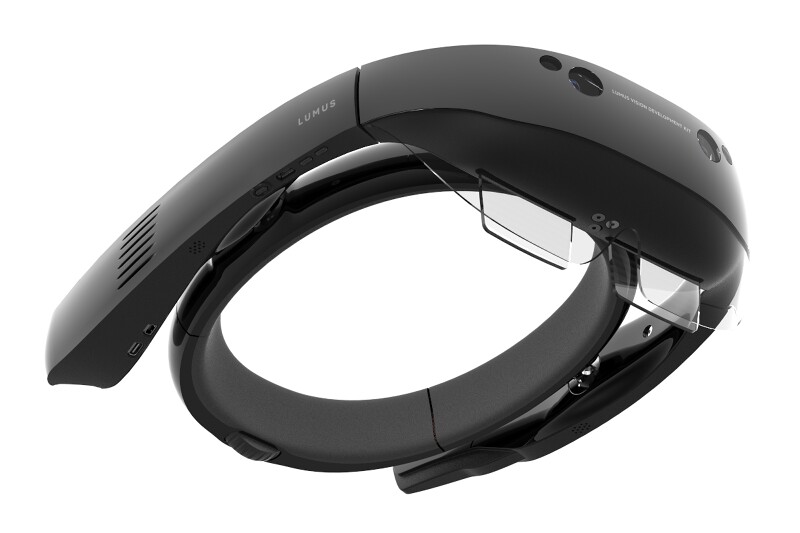 Lumus doesn’t make headsets but was showing design concepts for its components.
Lumus doesn’t make headsets but was showing design concepts for its components.
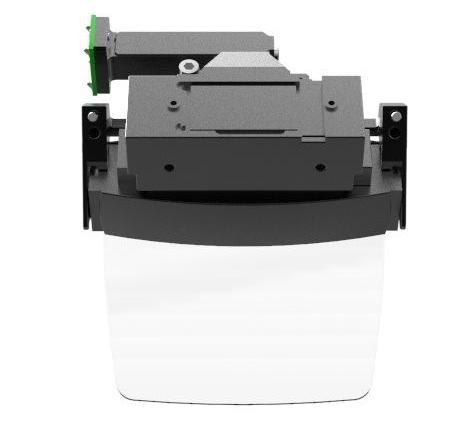 Lumus showed this FullHD engine which uses a Raontech Chip
Lumus showed this FullHD engine which uses a Raontech Chip
Psion was an iconic brand in the ’90s and had, arguably, the first useful PDA or pocket computer. Now there is a version, from Planet Computers in the UK, with a similar form factor and keyboard, but with an updated processor and running Android. The Gemini can also operate as a phone (or there’s a Wi-fi only version) but doesn’t have a camera, except as an option. The display is a 5.99″ 18:9 Full HD+ 2160 x 1080 unit (although the website also says it is a 5.7″ QuadHD!) The device is being promoted on Indiegogo and funding has reached $1.67 million, plenty more than the minimum needed. It is being designed by one of the original Psion designers. The device costs $399 for early backers, with 4G, and will cost $599 later. Expected delivery is December 2017.
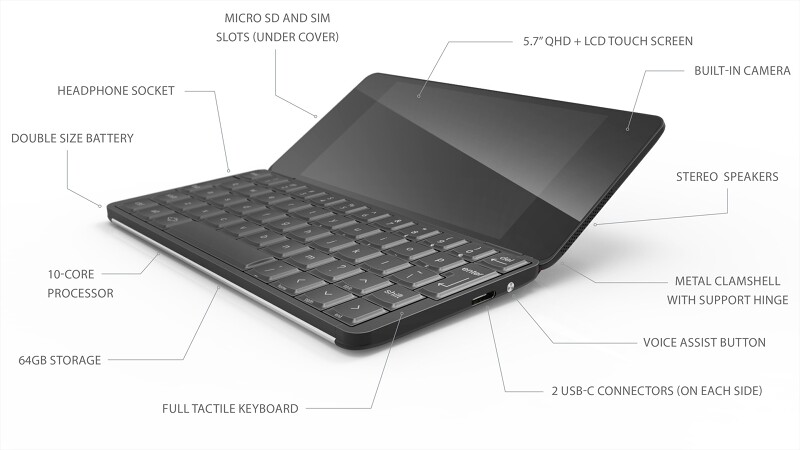 The Gemini PDA is an updated device based on the Psion form factor.
The Gemini PDA is an updated device based on the Psion form factor.
Razer showed its Project Linda Android laptop/phone hybrid. The unit is a mobile phone dock that uses the phone as the processing power for a clamshell form factor. The phone docks where a touch sensor would be and the 5.7″ touchscreen of the phone is used for the notebook touch input, and there is a motorised USB type-C connector that locks the phone in place. The clamshell will have a 13.3″ 2560 x 1440 120Hz touch display (although the prototype in Las Vegas supported just FullHD). The clamshell uses the Sentio desktop interface. (Sentio is the developer of the Superbook clamshell on Kickstarter). The case also has an additional battery (53.6W) and adds 200GB of additional storage. No pricing has yet been announced, but the project won lots of awards at the event.
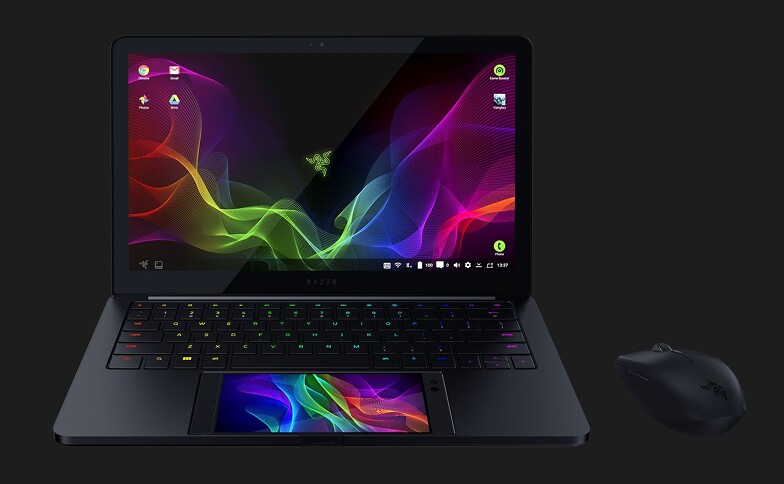 Razer’s Project Linda uses a Razer phone as the touch pad and CPU of a clamshell
Razer’s Project Linda uses a Razer phone as the touch pad and CPU of a clamshell
Skully Technologies was showing a new motorcycle helmet with integrated AR at CES. The Fenix AR helmet has a rear-view camera, and the rider can see a 180º view. It also has turn by turn navigation and connects to a smartphone by Bluetooth and supports voice interactions. Skully Technologies is a phoenix organisation, with a previous incarnation (or should that be inbikenation? – Man. Ed), Skully Inc, having failed in the summer of 2016 when it tried crowdfunding (and has been accused of blowing the money raised). The current owners bought ip and assets from the original company and plans to make special offers to crowdfunders that lost out in the failure. The helmet has four hours of battery life and the system is said to be based on projection. It will cost $1,899.
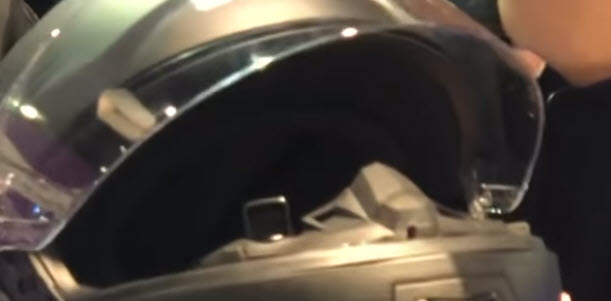 Skully’s Fenix AR has a small display, visible in this video capture.
Skully’s Fenix AR has a small display, visible in this video capture.
Check out the video (in German) below.
Skyworth showed a flexible OLED at the IFA trade show, but we had a camera malfunction and our picture didn’t come out at all well. However, the company showed the technology again at CES and this time, our reporter got a better picture. There were no details of the display or the supplier, but it shows that the company is interested in smaller devices. The company also had a kind of ‘smart bracelet’ prototype at CES, but without a working display.
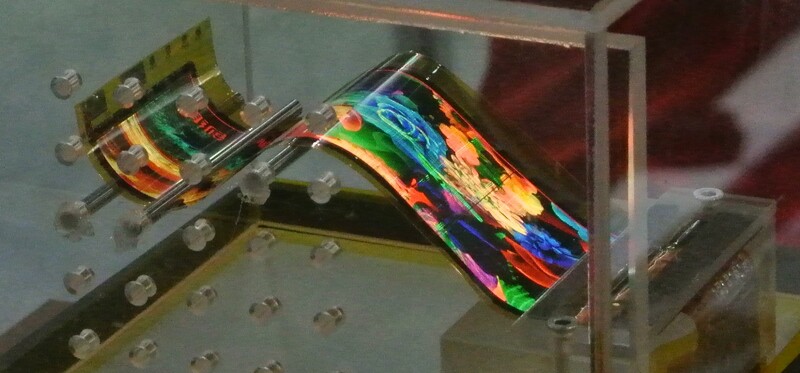 Skyworth’s Flexible OLED at CES and also shown at IFA. Image:Ken Werner
Skyworth’s Flexible OLED at CES and also shown at IFA. Image:Ken Werner
Sony fooled us by sneaking in an announcements of three new Xperia smartphones which were made available for pre-order. They are the Xperia XA2, Xperia XA2 Ultra and Xperia L2. The top of the range is the Ultra and it has a 6″ FullHD display and the XA2 has a 5.2″ FullHD spec while the L2 has a 5.5″ 720 x 1280 display. Both of the XA2 phones use a Snapdragon 630 with 3GB on the XA2 and 4GB of memory on the Ultra. The L2 has a Mediatek quadcore processor and 3GB of memory. Storage is from 32GB on all of the models and the cameras are 23MP + 16MP (Ultra), 23MB + 8MP (XA2) and 13MB + 8MP (L2). Pricing is $250 for the L2, $350 for the XA2 and $450 for the Ultra. At MWC, Sony is expected to launch a 4K OLED-based phone at MWC, the XZ Pro, which will have a Snapdragon 845 processor.
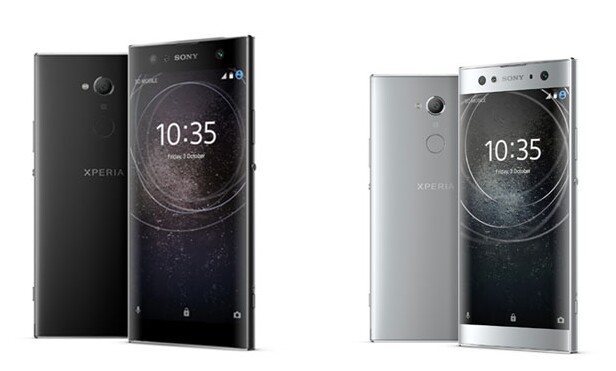 Sony’s Xperia XA2 and XA2 Ultra
Sony’s Xperia XA2 and XA2 Ultra
Vuzix was showing its Blade glasses at the exhibition and which are the first smart glasses that works with Amazon Alexa. Unfortunately, we didn’t get to the firm on the show floor, but have already made arrangements to catch up at MWC. The Blade glasses will cost $1,000 and are quite light. The glasses use a Cobra II DLP-based display system with waveguide-based transparent optics that Vuzix develops itself. The images are 480 x 854 in portrait mode and brightness can be made very high (3000 cd/m²) to allow outdoor use. They are self-contained and has a quad core ARM CPU and an 8 megapixel camera. The high brightness can limit the battery life in continuous use, but in ‘typical’ intermittent mode, they can last 8 hours.
